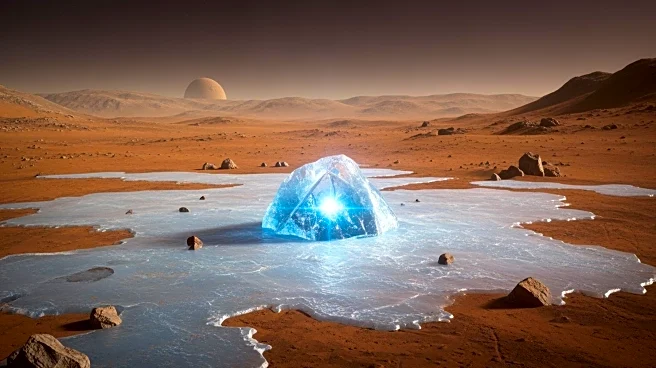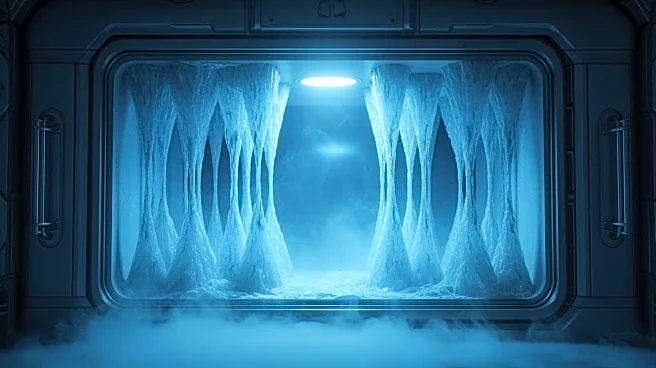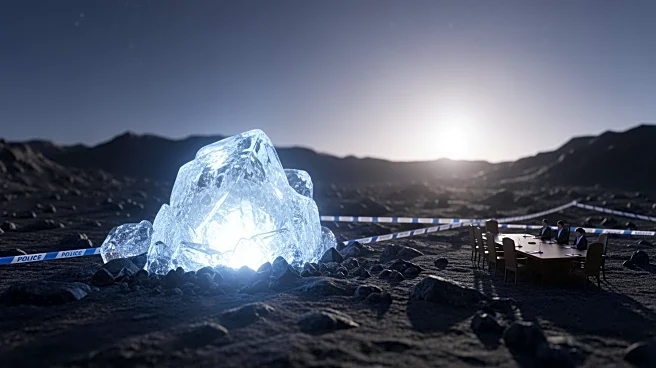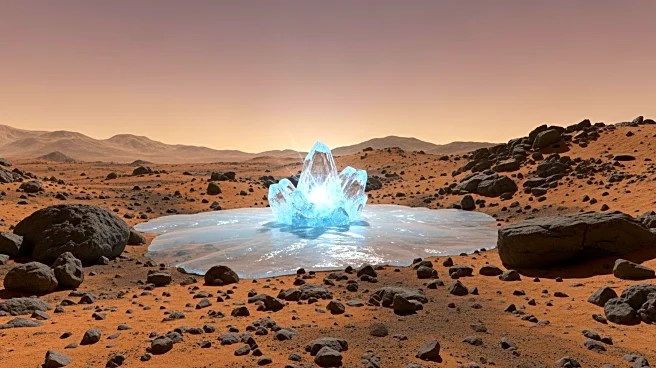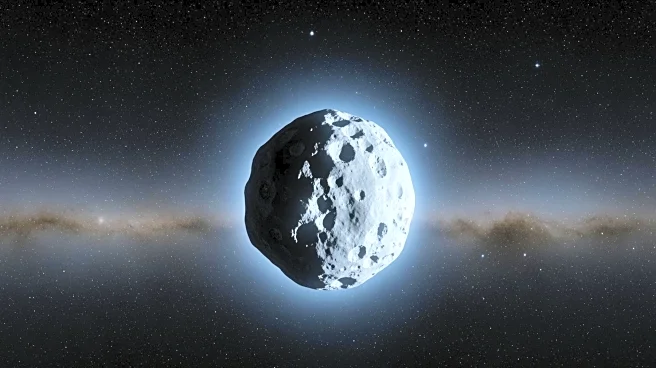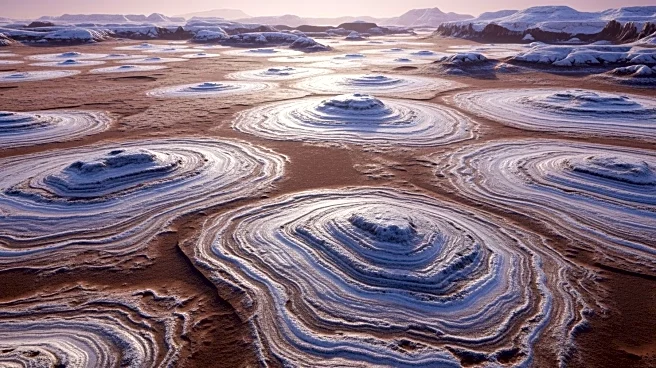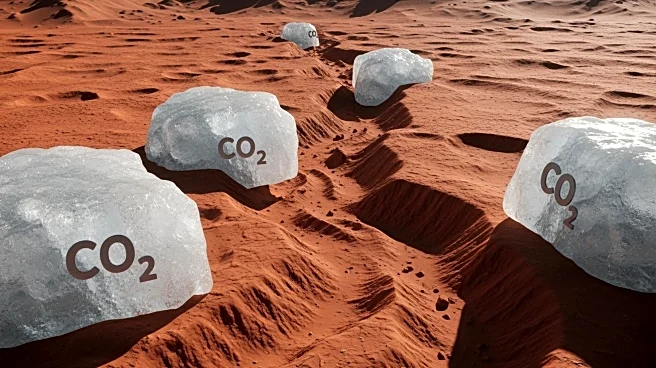What's Happening?
A recent study conducted by NASA and Penn State University indicates that fragments of biomolecules from ancient microbes could potentially survive in Martian ice for tens of millions of years. This discovery
was made through laboratory experiments that simulated Martian conditions, where E. coli bacteria were frozen in environments mimicking Martian soil and pure water ice. The samples were subjected to radiation levels equivalent to what they would experience over 20 million years on Mars. The study found that amino acids, the building blocks of proteins, survived better in pure ice than in ice mixed with sediment. This suggests that pure ice regions on Mars could be ideal locations for future missions to search for preserved biological material.
Why It's Important?
The findings of this study have significant implications for future Mars exploration missions. If biomolecules can indeed survive for millions of years in Martian ice, it increases the likelihood of discovering evidence of past life on Mars. This could provide crucial insights into the history of life in our solar system and the potential for life on other planets. The study also highlights the importance of targeting pure ice regions on Mars for exploration, as these areas may offer the best chance of finding preserved biological material. This could influence the planning and design of future missions, including the development of tools capable of drilling into subsurface ice deposits.
What's Next?
Future Mars missions may focus on exploring pure ice regions to search for preserved biomolecules. The study's findings could guide the selection of landing sites and the design of instruments for upcoming missions. Researchers may also conduct further experiments to refine their understanding of how biomolecules survive in Martian conditions, potentially leading to new strategies for detecting signs of life on Mars.
Beyond the Headlines
The study raises questions about the preservation of life in extreme environments, not only on Mars but also on other celestial bodies with icy surfaces, such as Europa and Enceladus. Understanding the mechanisms that allow biomolecules to survive in such conditions could have broader implications for astrobiology and the search for life beyond Earth.
